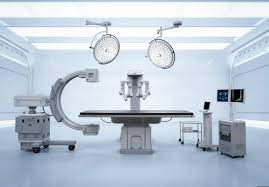Investigating the Reasons for the High Cost of Medical Equipment in India
India, a developing nation with a rapidly growing population, struggles to provide its inhabitants access to cheap healthcare. The high price of medical devices and equipment is one major cause for worry. This article tries to examine the causes of the increased costs of medical equipment in India and to clarify the complications surrounding the problem.
Dependence on Imports: India’s huge dependence on imports is a crucial factor in the expensive price of medical equipment there. Many cutting-edge medical devices and technology must be imported because they cannot be produced locally. The machines are more costly for customers as a result of large increases in the machines’ total cost due to taxes, import charges, and shipping expenses.
Currency Fluctuations: The Indian Rupee (INR), a key international reserve currency, fluctuates against other major currencies like the US Dollar and the Euro. Importing medical equipment becomes more expensive when the INR declines in value versus these currencies. Due of this instability, it is difficult for healthcare providers to plan ahead and budget for equipment acquisitions, which raises the cost to end users.
Research and Development Costs: Significant research and development (R&D) expenditures are required for the creation of novel medical technology. To recover their expenditures and pay for future R&D projects, businesses sometimes pass these costs on to customers. Additionally, manufacturers incur additional costs as a result of regulatory procedures and compliance standards, which raises the entire cost of medical equipment.
Quality and requirements: To guarantee patient safety, medical equipment must abide by strict quality and safety requirements. These requirements demand the use of premium components, cutting-edge production processes, and exacting testing procedures. Meeting these standards raises manufacturing expenses, which are then transferred to end customers and drive up the price of the devices.
Limited Domestic manufacture: Although India has made significant progress in domestic medical device manufacture, the vast bulk of cutting-edge medical equipment is still imported. Medical equipment costs rise as a consequence of growing demand and little competition since there is a shortage due to inadequate local production capacity. Increasing local manufacturing capacity may eventually result in cost savings.
Infrastructure and Distribution Challenges: India’s extensive and diversified terrain makes it difficult to distribute medical equipment to outlying places. Higher transportation costs may result from inadequate transportation infrastructure, including storage facilities and road connections. The total cost of medical equipment may also be increased by guaranteeing prompt maintenance and replacement parts availability in distant areas.
Regulatory Obstacles: A complicated regulatory system that includes licencing, quality certifications, and pricing restrictions is in place for the medical device business in India. For producers, obtaining these certifications and adhering to standards may take a lot of time and money. The end-users often bear the expenses of regulatory compliance, raising the price of the equipment.
The high cost of medical equipment in India may be ascribed to a number of things, including reliance on imports, exchange rate changes, costs associated with R&D, quality standards, limited local production, infrastructural issues, and regulatory restrictions. A multifaceted strategy incorporating government efforts, business cooperation, and investments in indigenous manufacturing capabilities is needed to address these concerns. India may aim to make medical equipment more inexpensive and accessible for its inhabitants by lowering import dependency, simplifying regulatory procedures, and encouraging native manufacture.







